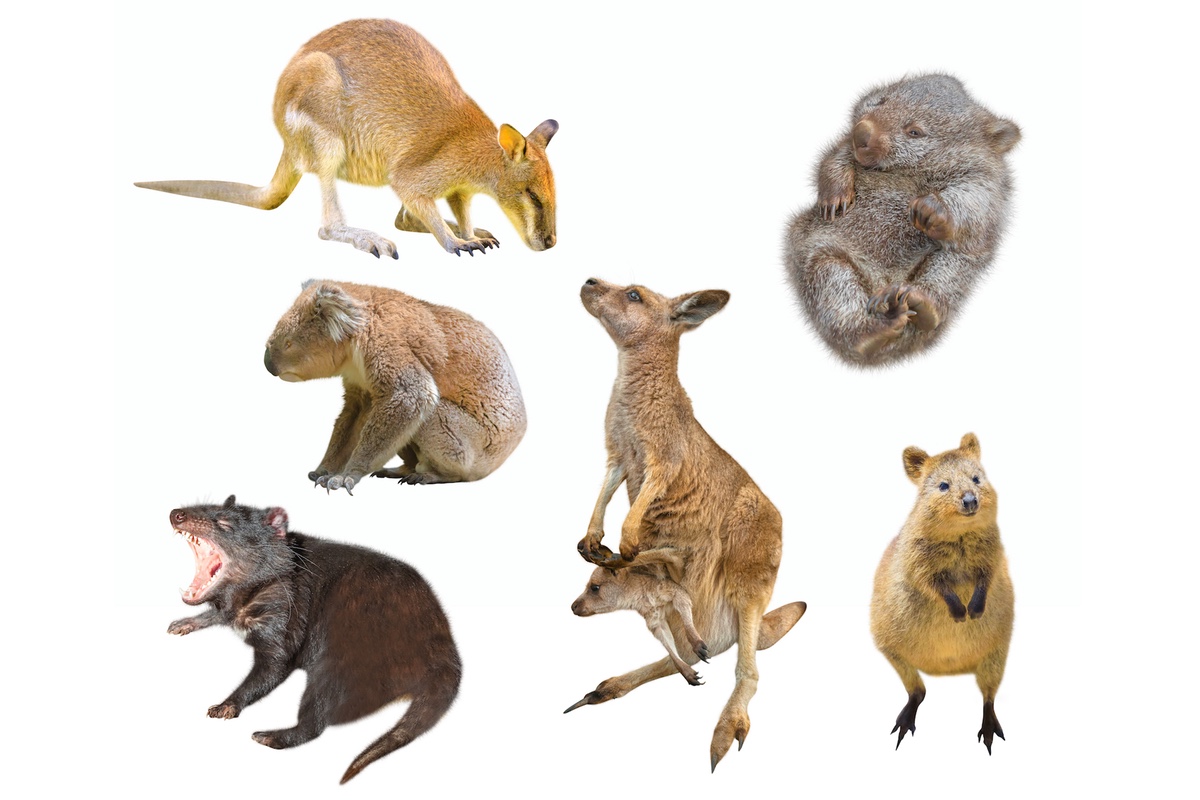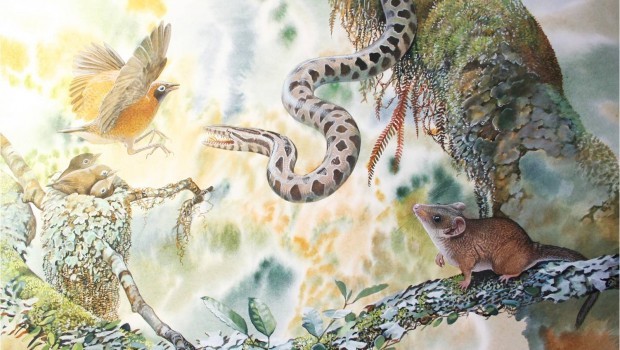Why Are There So Many Marsupials in Australia?


Australia is the kingdom of marsupials, home to furry kangaroos, koalas and wombats. The continent has so many marsupials, it raises the question: Did these pouch-bearing mammals arise Down Under?
The answer is an unqualified (or "un-koalafied") no. Marsupials were around for at least 70 million years before they made it to Australia, according to Robin Beck, a lecturer in biology at the University of Salford in the United Kingdom.
"Marsupials absolutely categorically did not originate in Australia," Beck told Live Science. "They are immigrants." [Why Haven't All Primates Evolved into Humans?]
In comparison to most mammals, marsupials are odd. Unlike placental mammals, such as humans, dogs and whales, marsupials give birth to relatively underdeveloped young that continue to grow a ton in the mother's pouch.
"The young are born alive, but they're very poorly developed," Beck told Live Science. "They basically crawl to their mother's nipple, which is often in a pouch, and they basically clamp on the nipple and stay there, feeding on their mother's milk for long periods of time — usually, several months."
Marsupial homeland
And it turns out, the oldest known marsupials are actually from North America, where they evolved during the Cretaceous period after splitting off from placental mammals at least 125 million years ago, Beck said.
These ancient marsupials appeared to flourish in North America, populating what was then the supercontinent Laurasia with about 15 to 20 different marsupial species, all of which are now extinct, Beck said. It's unclear why these marsupials did well. But for some reason, at about the time that the nonavian dinosaurs went extinct, about 66 million years ago, the marsupials made their way down to South America. At that time, North and South America weren't connected as they are today. But the two continents were very close, and a land bridge or a series of islands may have linked them. This connection allowed all kinds of animals to expand their stomping grounds.
Get the world’s most fascinating discoveries delivered straight to your inbox.
Once in South America, marsupials and their close relatives had a field day, diversifying like crazy within 2 million to 3 million years after arriving, Beck said. For instance, marsupials and their close relatives evolved into bear- and weasel-size carnivores, and one even evolved saber teeth. Others evolved to eat fruits and seeds.
"What's happening in South America is they're evolving to fill the kinds of niches that in the northern continents certainly were filled by placental mammals," Beck said.
Many of these marsupials went extinct between then and now, but South America is still a marsupial hotspot today. There are more than 100 species of opossums, seven species of shrew opossums and the adorable monito del monte (Dromiciops gliroides), whose Spanish name translates to "little monkey of the mountain."
On a side note, within the last 1 million years, one of South America's opossums traveled north and now lives in North America. This is the Virginia opossum (Didelphis virginiana), the only marsupial living north of Mexico, Beck said.
Also, opossums belong to a different order than possums. Possums are native to Australia and New Guinea, are closely related to kangaroos, and have a number of anatomical differences, such as enlarged lower incisors, that the South American opossum lacks, Beck said.
So, how did marsupials get from South America to Australia? [Will There Ever Be Another Pangea?]
Journey Down Under
Up until about 40 million to 35 million years ago, both South America and Australia were connected to Antarctica, forming one giant land mass. At that time, Antarctica wasn't covered with ice, but instead with a temperate rainforest, and "it was not a bad place to live," Beck said.
It appears that marsupials and their relatives bounded down from South America, strode across Antarctica and wound up in Australia, Beck said. There's even fossil evidence: On Antarctica's Seymour Island, there are fossils of marsupials and their relatives, including a close relative of the monito del monte, Beck said.
The oldest fossil marsupials from Australia are found at a 55-million-year-old site called Tingamarra, near the town of Murgon in Queensland, Beck said. Some of the fossil marsupials at Tingamarra are similar to those in South America. For instance, the ancient and tiny fruit-eating marsupial Chulpasia from Peru is a close relative of another fossil marsupial found at Tingamarra, Beck said.
Yet another Tingamarra marsupial, the insect-eating Djarthia, may be the ancestor of all living Australian marsupials, Beck said.
Then, there's a big gap in the Australian fossil record. After Tingamarra, the next oldest marsupial fossils on record are 25 million years old. "What we see then is clearly there's been a huge amount of diversification within Australia," Beck said. "By that time we see koalas, we see relatives of wombats, we see relatives of bandicoots." Basically, all of the major Australian marsupial groups are present by 25 million years ago, he said.
Again, it's unclear why marsupials thrived in Australia. But one idea is that when times were tough, marsupial mothers could jettison any developing babies they had in their pouches, while mammals had to wait until gestation was over, spending precious resources on their young, Beck said.
Another idea is that there were no placental mammals competing with the marsupials in Australia. But this idea is now contradicted, by a fossil tooth that belongs to a placental mammal or a placental-mammal relative discovered at Tingamarra. This indicates that placental mammals were on the continent as far back as 55 million years ago, Beck said.
Today, there are about 250 marsupial species alive in Australia, around 120 marsupial species in South America and just one (the Virginia opossum) living in North America. In essence, the marsupials' ancestral geography has flipped.
"That pattern is the complete reverse of the situation 125 million years ago," Beck said. "Where things are today is not necessarily an indication of where they were millions of years ago."
Originally published on Live Science.

Laura is the managing editor at Live Science. She also runs the archaeology section and the Life's Little Mysteries series. Her work has appeared in The New York Times, Scholastic, Popular Science and Spectrum, a site on autism research. She has won multiple awards from the Society of Professional Journalists and the Washington Newspaper Publishers Association for her reporting at a weekly newspaper near Seattle. Laura holds a bachelor's degree in English literature and psychology from Washington University in St. Louis and a master's degree in science writing from NYU.




